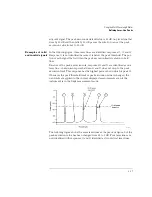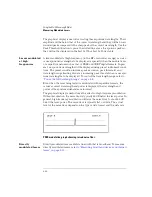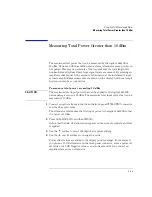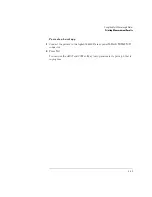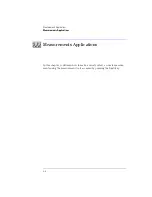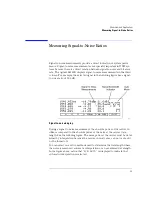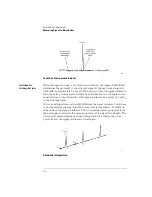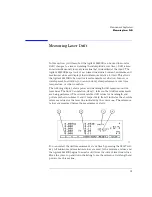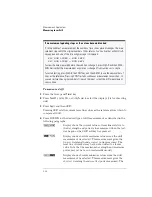
2-26
Using the Multi-Wavelength Meter
Calibrating Measurements
Calibrating Measurements
The wavelength of light changes depending on the material that the light is
passing through. To display meaningful wavelength measurements, the
Agilent 86120B performs two steps:
1
Measures the wavelength in air.
2
Converts the wavelength to show values in either a vacuum or “standard air”.
For example, a laser line with a wavelength of 1550.000 nm in a vacuum would
have a wavelength in standard air of 1549.577 nm.
Because all measurements made inside the Agilent 86120B are performed in
air, the density of air, due to elevation, affects the wavelength results. You
must calibrate the Agilent 86120B by entering the elevation. Elevations from
0 to 5000 meters can be entered. The elevation correction is immediately
applied to the current measurement even if the instrument is in the single
measurement acquisition mode.
Annotation on the display shows the current calibration elevation in meters
and whether the wavelength measurements are shown for a vacuum (
VAC
) or
standard air (
STD AIR
).
If you select frequency instead of wavelength measurements, switching
between vacuum and standard air will not affect the measurement results.
This is because the frequency of an optical signal does not change in different
mediums—only the wavelength changes.
Definition of standard air
Standard air is defined to have the following characteristics:
Barometric pressure: 760 torr
Temperature: 15
°
C
Relative humidity: 0%
Summary of Contents for Agilent 86120B
Page 1: ...Agilent 86120B Multi Wavelength Meter User s Guide ...
Page 11: ...Contents 3 Contents Power Cords 8 16 Agilent Technologies Service Offices 8 18 ...
Page 12: ......
Page 38: ......
Page 68: ......
Page 100: ...4 18 Programming Monitoring the Instrument ...
Page 132: ......
Page 230: ......
Page 248: ...8 6 Reference Menu Maps Delta On Menu Delta Off Menu ...
Page 250: ...8 8 Reference Menu Maps System Setup Menu ...
Page 268: ......






